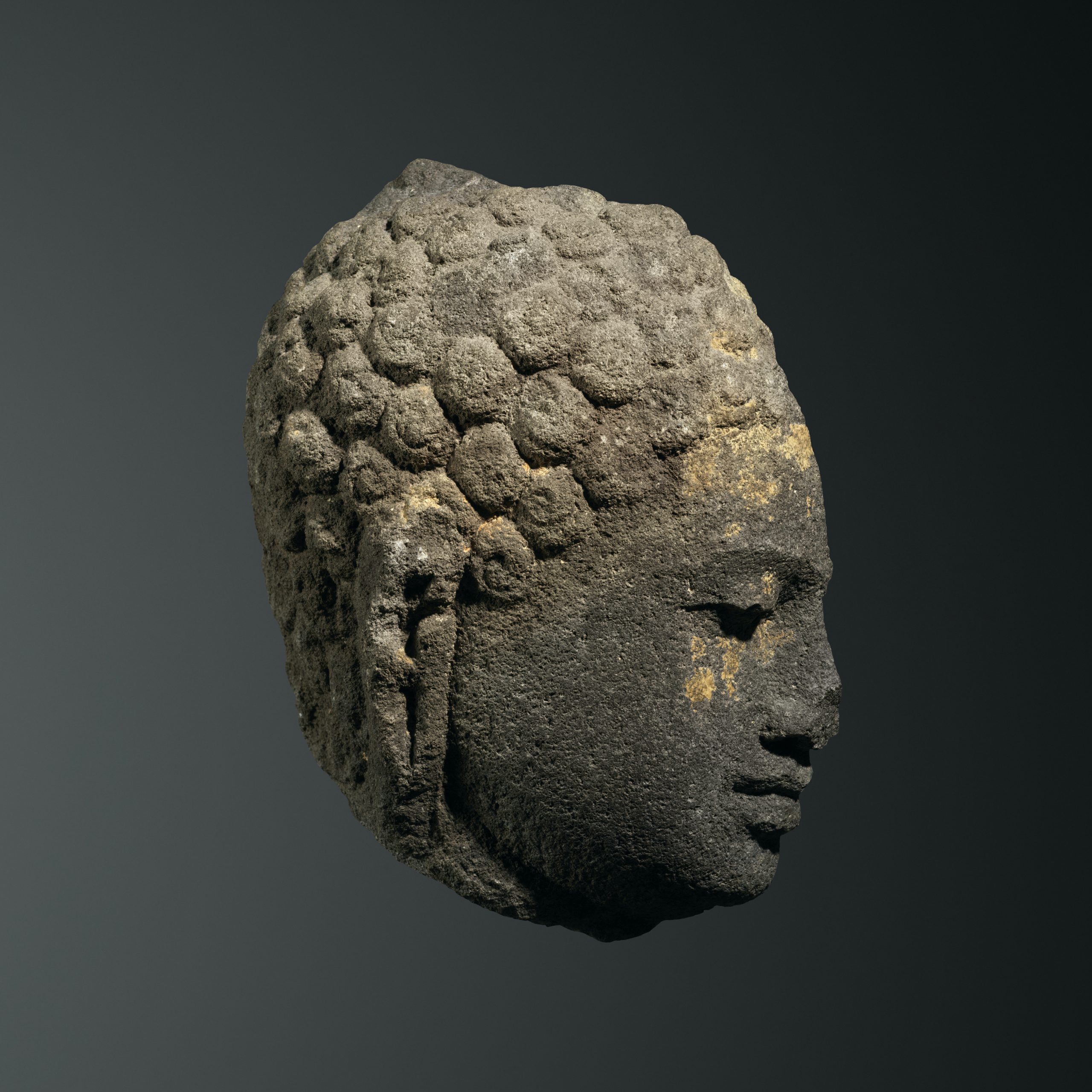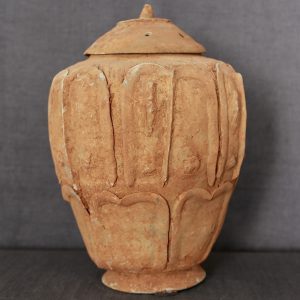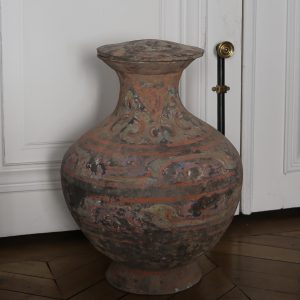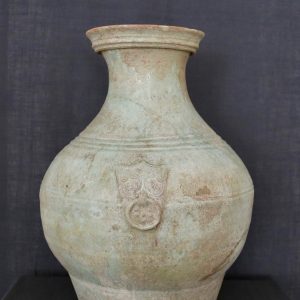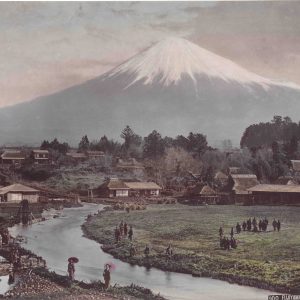Buddha head profile
Andesite
Indonesia, island of Java
Circa 9th century, Central Java period
H. 28 cm
Description
The iconic face of Borobudur
This head recalls the 504 statues of Buddha placed on and around the monumental Buddhist temple of Borobudur in Indonesia. These figures represent the five Dhyāni Buddhas or Buddhas of wisdom, placed at the top and at the four faces of this immense stupa. This face has come down to us fragmentary, scarred on the right half. He is presented in profile where we observe a figure full of grace, imbued with the values of compassion and serenity, remarkably magnified by his lacunar, almost mysterious character. According to Buddhist doctrine, the face of Buddha Śākyamuni is distinguished by some characteristic features called lakṣaṇa, numbering 72. This face does not present the tuft of hair between the browbones (ūrṇā), this buddha or “awakened” in Sanskrit figure therefore, in accordance with Borobudur’s iconography, a representation of the jina or Buddha of the five directions. It could therefore be Amogasiddhi in the North, Akṣobhya in the East, Ratnasambhava in the South, Amitābha in the West or Vairocana, Buddha of the Zenith. These higher deities of Mahayan Buddhism are considered to be emanations of the primordial Buddha, they accompany and protect at their cardinal points the sacred buildings and objects of the doctrine.
An emblematic work of medieval Javanese art
This remarkable fragment presents the elements of the classical style of Central Java: a round face, graceful and delicate. It is emblematic of Indonesian Buddhism, the spread of which did not begin until the accession of the Śailēndra dynasty, which reigned near Yogyakarta, in the southern part of the island in the mid-8th century. The construction of Borobudur is a major event, apparently initiated by King Dharanindra (775-800) and completed by his grandson, Samaratungga (812-833). We do not know on which important relics this stupa was built but it seems that at the time of its discovery by the ŚailŚndra rulers around 795, it was a place of Hindu pilgrimage, as evidenced by the remains of the platforms present at the base of stupa. Representations of jina, comparable to this head, are found on the intermediate platforms and at its top, each depicted in an outward meditation posture, facing the fertile plains of Kedu. The Borobudur shrine features a giant mandala representing the cosmos in the philosophy of Great Vehicle Buddhism. Its ascent is supposed to guide the pilgrim on his journey to deliverance (nirvāṇa). The pyramidal plan of the stupa is declined in nine terraces gathered in three parts, representing respectively in an ascending way: the Kāmadhātu (the world of desires), the Rūpadhātu (the world of forms) and the Arupadhātu (the world without form), these the last two perhaps hosted the fragment that interests us.
Andesite, a material specific to Indonesian productions
Located at the foot of the Merapi volcano, Javanese statuary composes with a volcanic stone, porous and tender. This fantastic fragment illustrates the flexible modeling, conducive to the development of a naturalistic style that can be found in the many bas-reliefs that adorn the ambulatory of Borobudur. The cells of this statue are scattered scattered about by the traces of stucco still remaining.
Provenance: Private collection, France, acquired from Jean-Claude Moreau-Gobard in the 1980s.

